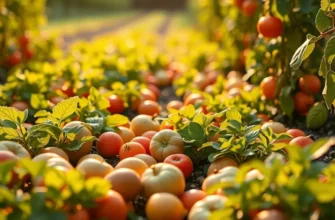When it comes to food management, one common question arises: Can you refreeze thawed food? Many people are uncertain about the safety and quality implications of refreezing items once they’ve been thawed. Understanding the science behind this practice can help you make informed choices and avoid food waste. This article demystifies the process and provides guidelines you can trust.
Understanding the Thawing Process

Thawing food seems straightforward but involves complex scientific reactions. At a fundamental level, thawing transitions food from a frozen state to a ready-to-eat form without cooking. Understanding what happens during thawing can help you make safer decisions about refreezing.
When food freezes, the water inside forms ice crystals. These crystals cause cells in the food to rupture. Upon thawing, the integrity of textures and flavors can deteriorate, leading to noticeable changes. For example, meat may become mushy as the ruptured cells release their contents. This structural breakdown is a vital consideration when thinking about refreezing thawed food.
Another critical aspect is the temperature at which food is thawed. The danger zone—between 40°F and 140°F (4°C and 60°C)—is where bacteria can multiply rapidly. Foods left in this zone for too long may harbor harmful bacteria, complicating refreezing. If the microorganisms aren’t killed by subsequent cooking, they can present serious health risks. Therefore, always thaw food in the refrigerator, cold water, or microwave to minimize risk.
Adhering to proper thawing procedures not only maintains food quality but also prevents foodborne illnesses. The USDA suggests that food remains safe indefinitely while frozen, but the quality can degrade over time. When you refreeze thawed food, it’s crucial to remember that the second freeze may further diminish its quality. The cumulative effect of successive freezing and thawing cycles can compromise texture and flavor to the point where the food becomes unpalatable.
Moreover, consider the type of food being refrozen. Foods like raw meat or poultry often withstand refreezing better than prepared dishes containing mayonnaise or cream sauces, which can separate and become watery. Vegetables that are intended to be consumed raw may lose their crispness and nutritional content as well.
Another aspect to consider is how often ingredients undergo preparation and storage processes. Efficient storage techniques like vacuum sealing can reduce air exposure and maintain quality during freezing and thawing. Explore more about preserving foods effectively by exploring eco-smart kitchen storage.
By understanding the science of thawing and the associated risks, you’ll be better equipped to decide when refreezing is a viable option. The key is to balance convenience with safety, ensuring that your food remains both enjoyable and safe to eat.
Safe Refreezing Practices

Understanding the complexities of refreezing thawed food is vital to ensure both safety and quality. Refreezing poses risks if not executed properly, but with the right precautions, you can minimize waste and maintain food integrity.
The U.S. Department of Agriculture (USDA) advises that certain foods are safe to refreeze after thawing, primarily if they have been thawed correctly in the refrigerator. This guidance underscores the importance of controlled thawing, as food thawed at room temperature can develop harmful bacteria, making refreezing unsafe.
Types of Food Safe to Refreeze: Generally, raw foods such as meat, poultry, and fish are safe to refreeze if thawed in the refrigerator. However, the quality may diminish. Cooked foods can also be refrozen if they have not been left out for more than two hours in the danger zone, defined as temperatures between 40°F and 140°F.
When refreezing breads, cakes, or pastries, you may notice minimal change in quality. Yet, for foods like ice cream, refreezing is not recommended due to texture changes.
Practical Tips for Safe Refreezing
-
Monitor Temperature: Refrigeration is key. Ensure your fridge’s temperature is set below 40°F. This environment slows bacterial growth and keeps thawed foods safer.
-
Use Airtight Packaging: Moisture loss during refreezing can affect texture and flavor. Sealing food in airtight containers or freezer bags helps retain quality.
-
Label and Date Items: Always mark packages with the date of refreezing. Proper labeling avoids the confusion of expiration, ensuring timely consumption.
-
Portion Before Freezing: Dividing larger batches into smaller portions before initial freezing can help. It minimizes waste as you only thaw what you need, reducing frequency of refreezing.
-
Quick-Freezing Approach: Use a quick-freezing method, when possible. Spread out food on a tray to freeze quickly before placing in containers. Quick freezing preserves texture more effectively.
While refreezing may alter texture, flavor, and nutritional values, an informed approach helps mitigate significant losses. Look into integrating an eco-friendly kitchen storage solution to further enhance your food management practices (learn more about eco-smart kitchen storage).
Awareness of the types of foods that endure refreezing well and those that do not is crucial. By understanding these elements and following a structured approach, you can effectively reduce food waste while ensuring safety and quality.
Final words
Refreezing thawed food can be safe if you follow specific guidelines. The critical factor is always to prioritize food safety and quality. Thawed food that gets warm enough can harbor bacteria, making it essential to refreeze while still safe, such as items thawed in the refrigerator. Always check for texture and quality when using thawed food later. By understanding the thawing and refreezing process, you can reduce food waste and make healthier dietary choices.








